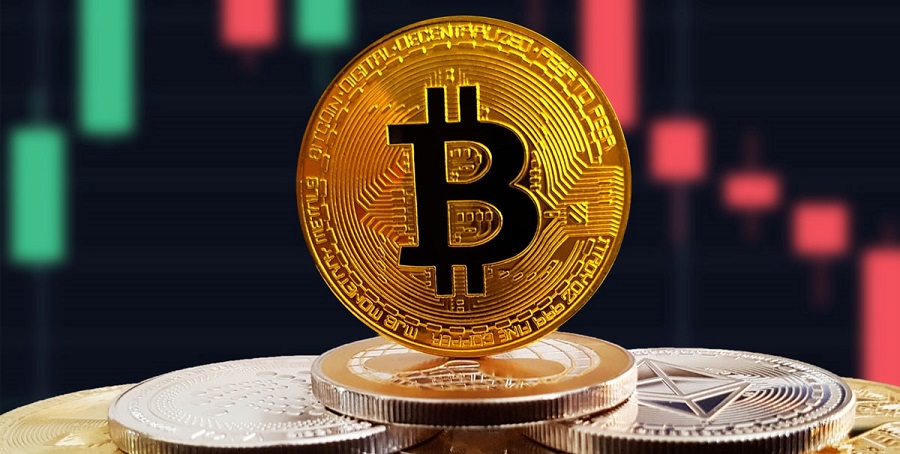Bitcoin, the first and most well-known cryptocurrency, has taken the financial world by storm since its inception in 2009. Created by an anonymous individual or group under the pseudonym Satoshi Nakamoto, Bitcoin introduced the concept of decentralized digital currency, which has since evolved into a global financial phenomenon. One of the most fascinating aspects of Bitcoin is its price, which has been marked by dramatic fluctuations since its launch. In this article, we will explore the factors that influence the price of Bitcoin, its impact on the global economy, and its potential future. https://finanzasdomesticas.com/el-precio-del-bitcoin
Table of Contents
Toggle1. What Drives the Price of Bitcoin?
Bitcoin’s price is primarily determined by market supply and demand dynamics. However, several factors contribute to the frequent and sometimes extreme volatility seen in Bitcoin’s value.
A. Market Sentiment and Speculation
One of the most significant factors affecting Bitcoin’s price is market sentiment. As a highly speculative asset, Bitcoin’s price often rises and falls based on investor sentiment, news, and trends. When positive news, such as institutional adoption or government regulation, emerges, it can fuel optimism and cause prices to spike. Conversely, negative news, such as government crackdowns or security breaches, can trigger panic selling and cause the price to plummet.
Bitcoin’s price can also be influenced by speculative trading, where traders buy and sell based on short-term market movements rather than the underlying fundamentals of the cryptocurrency. This speculative behavior can lead to price bubbles, where the price of Bitcoin becomes disconnected from its true value and eventually crashes, only to rise again when the market stabilizes.
B. Supply and Demand
Bitcoin operates on a fixed supply model, with a total cap of 21 million coins. This limited supply is one of the key factors that drives its price. As more people become interested in owning Bitcoin, the demand increases, but the supply remains constant, leading to upward pressure on the price.
Bitcoin’s supply is also affected by its mining process. Miners are rewarded with new bitcoins for validating transactions and securing the network. However, the reward for mining decreases over time in an event known as the “halving,” which occurs approximately every four years. As the reward decreases, the rate at which new bitcoins enter circulation slows down, reducing the overall supply of Bitcoin. This scarcity can drive prices higher, especially during periods of increased demand.
C. Adoption and Use Cases
The more widely Bitcoin is adopted for various uses, the more its value tends to rise. Bitcoin is often seen as a store of value, similar to gold, and its price can increase as more individuals and institutions use it as a hedge against inflation or economic instability. Furthermore, as Bitcoin gains acceptance as a means of payment, its price may rise as it becomes more integrated into the global financial system.
For instance, when major companies like Tesla, Square, and MicroStrategy began purchasing Bitcoin as part of their treasury reserves, it bolstered the perception of Bitcoin as a legitimate asset and contributed to price increases. Similarly, the increasing use of Bitcoin in remittances, cross-border payments, and decentralized finance (DeFi) applications has had a positive impact on its value.
D. Regulation and Government Policies
Government policies and regulations play a significant role in shaping the price of Bitcoin. Bitcoin operates in a decentralized manner, meaning it is not controlled by any central authority or government. However, governments can influence the price of Bitcoin through their stance on regulation and adoption.
Positive regulatory developments, such as clear frameworks for cryptocurrency trading and investment, can encourage institutional investors and individuals to participate in the market, driving prices higher. Conversely, regulatory crackdowns or bans on Bitcoin trading in key markets, such as China, can result in sharp price declines.
Bitcoin’s price is also affected by its treatment as an asset. In countries where Bitcoin is viewed as a commodity, like the United States, it is subject to taxes on capital gains. In other countries, such as El Salvador, Bitcoin has been adopted as legal tender, which could increase its legitimacy and demand.
2. Bitcoin’s Price History: A Roller Coaster Ride
Bitcoin’s price history is nothing short of extraordinary, marked by periods of meteoric rise followed by sharp corrections. Since its creation, Bitcoin has seen numerous booms and busts, each contributing to its volatile reputation.
A. The Early Years: From Pennies to Dollars
In its early years, Bitcoin’s price was negligible, often worth just a few cents. The first recorded Bitcoin transaction took place in 2010, when a programmer named Laszlo Hanyecz paid 10,000 bitcoins for two pizzas. At the time, Bitcoin’s price was less than a penny, and few people believed it would become a mainstream financial asset.
However, as Bitcoin gained attention from early adopters, its price began to rise. By late 2013, Bitcoin had reached $1,000 per coin for the first time, prompting widespread media coverage and greater interest in the cryptocurrency.
B. The 2017 Bull Run and Subsequent Crash
The most significant price surge in Bitcoin’s history occurred in 2017. Bitcoin’s price skyrocketed from around $1,000 at the beginning of the year to nearly $20,000 in December. This rally was fueled by increased media attention, speculation, and a growing sense of FOMO (fear of missing out) among investors.
However, the 2017 bull run was followed by a sharp crash in early 2018. Bitcoin’s price fell by more than 80%, dropping to around $3,000 by December 2018. This crash highlighted the inherent volatility of Bitcoin and the risks of investing in speculative assets.
C. The 2020-2021 Bull Run
Bitcoin experienced another dramatic price surge in 2020 and 2021. This time, institutional adoption played a key role in driving the price higher. Companies like MicroStrategy, Tesla, and Square announced large Bitcoin purchases, signaling growing acceptance of the cryptocurrency as a store of value. Additionally, the global economic uncertainty caused by the COVID-19 pandemic led many investors to seek alternative assets to hedge against inflation.
By December 2020, Bitcoin’s price had surpassed its previous all-time high of $20,000, and by April 2021, it reached an all-time high of nearly $65,000. However, the price once again saw a significant correction in the summer of 2021, dropping below $30,000. As of late 2024, Bitcoin’s price fluctuates regularly, influenced by various factors such as market sentiment, regulatory news, and technological developments.
3. The Future of Bitcoin: Volatility and Long-Term Prospects
Bitcoin’s price remains highly volatile, making it a risky investment. While it has experienced significant gains over the years, it has also faced steep declines. However, many believe that Bitcoin’s long-term prospects are promising, especially as adoption continues to grow and institutional interest deepens.
As more countries and institutions recognize Bitcoin as a legitimate asset class, it could become more integrated into the global financial system. The ongoing development of Bitcoin-related technologies, such as the Lightning Network (which aims to make Bitcoin transactions faster and cheaper), could further boost its utility and price.
However, Bitcoin faces challenges, including regulatory uncertainty, competition from other cryptocurrencies, and environmental concerns related to its energy-intensive mining process. The future of Bitcoin will depend on how these challenges are addressed and whether it can maintain its position as the leading cryptocurrency.
4. Conclusion: Navigating the Bitcoin Price Landscape
The price of Bitcoin is a reflection of its evolving role in the global economy. While its volatility presents risks for investors, it also presents opportunities for those who understand the market dynamics. As Bitcoin continues to mature and gain acceptance, its price may stabilize, but the inherent volatility will likely remain a defining feature.
Investors, regulators, and businesses alike will need to navigate the complexities of Bitcoin’s price movements in order to fully understand its potential. Whether you see Bitcoin as a speculative asset, a hedge against inflation, or a groundbreaking technology, its price will continue to be a critical indicator of its place in the future of finance.
Related Posts
-
https://finanzasdomesticas.com/china-prohibe-las-criptomonedas
Finanzas Domésticas is a Spanish-language platform focused on providing practical advice on personal finance, saving…
-
https://finanzasdomesticas.com/el-pib-de-alemania/
Germany, as the largest economy in Europe and the fourth largest in the world, holds…
-
https://finanzasdomesticas.com/china-prohibe-las-criptomonedas/
1. Introduction Domestic finances, often referred to as personal or household finances, encompass the management…
-
https://finanzasdomesticas.com/economia-de-india-afectada/
India, one of the fastest-growing economies in the world, has been facing a range of…
-
https://quesonlosvaloreseticos.com/diferencia-entre-etica-y-valores/
1. Introduction In everyday life, the terms "ethics" and "values" are often used interchangeably, but…
-
who owns. https://www.jlwranglerforums.com/
The Jeep Wrangler JL, introduced in 2018, has become one of the most iconic and…










